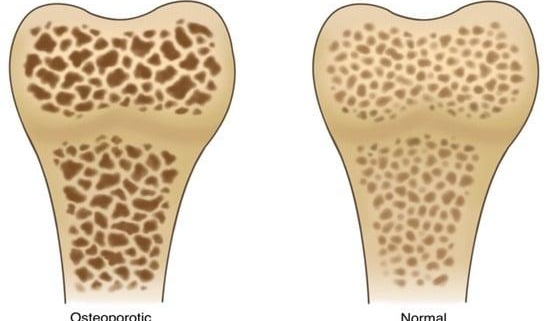
Osteoporosis
Overview
Osteoporosis, often referred to as the ‘silent disease,’ is a medical condition in which bones become fragile and weaker. This weakening usually leads to high susceptibility to fractures. Although this condition affects people across the globe, it is prevalent in adults over the age of 50, with women being more vulnerable than men. If left undetected or untreated, it can cause a drastic impact on quality of life. Therefore, proper understanding and management of osteoporosis are crucial.
Types
Primarily, osteoporosis is classified into two types:
1. Primary Osteoporosis: This type is the most common and often is a result of aging and hormonal changes. It’s further divided into Type I (postmenopausal osteoporosis) and Type II (senile osteoporosis).
2. Secondary Osteoporosis: This type occurs due to certain medical conditions such as hyperthyroidism, use of certain drugs, or lifestyle habits like excess alcohol consumption and smoking.
Causes
Several factors contribute to the development of osteoporosis, which includes:
– A reduced production of estrogen in women after menopause.
– Reduced level of testosterone in men.
– Insufficient dietary intake of calcium and Vitamin D.
– Physically inactive lifestyle.
– Prolonged use of certain medications, such as corticosteroids.
– Smoking and excessive alcoholic drinks.
- Certain medical conditions, like rheumatoid arthritis and hyperthyroidism.
Symptoms
In the early stages, osteoporosis may not produce obvious symptoms. However, as the disease progresses, patients may experience:
– Back pain due to a fractured or collapsed vertebra.
– Gradual loss in height over time.
– A stooped posture.
– Frequent fractures, even in minor falls or bumps.
Diagnosis
Diagnosing osteoporosis typically involves various tests and examinations, which include:
– Bone Mineral Density Test (BMD): The most commonly used diagnostic tool, BMD measures the calcium and other minerals present in a segment of the bone.
– Blood Tests: These tests check the levels of calcium and vitamin D in your blood.
– X-rays: An x-ray can show whether a person has osteoporosis before a broken bone occurs.
Treatment Options
Treatment for osteoporosis often involves lifestyle changes and medications designed to slow the process of bone loss or increase bone density. These include:
– Medications: Various drugs are used to either slow bone loss or increase bone formation.
– Lifestyle Changes: These include increasing the intake of calcium and vitamin D, quitting smoking, limiting alcohol, and doing regular weight-bearing exercises.
– Hormone-Related Therapy: For some, the use of hormones can help prevent additional bone loss.
Living with Osteoporosis
Living with osteoporosis can be challenging, but there are many strategies to manage the condition, such as:
– Follow the doctor’s prescribed treatment plan.
– Maintain a healthy diet rich in calcium and Vitamin D.
– Engage regularly in weight-bearing and muscle-strengthening exercises.
– Implement safety measures to prevent falls and fractures.
When to Seek Help
Consult a healthcare provider if you experience persistent pain, height loss, formation of stooped posture, or fractures. Also, individuals over the age of 50 with risk factors (like postmenopausal women) should consider regular screening examinations. Additionally, sudden severe back pain can indicate a spine fracture; it’s crucial to seek immediate medical help in such cases.
osteoporosis management lies in early detection, effective treatment, and lifestyle improvements which can significantly reduce the risk and improve quality of life.
